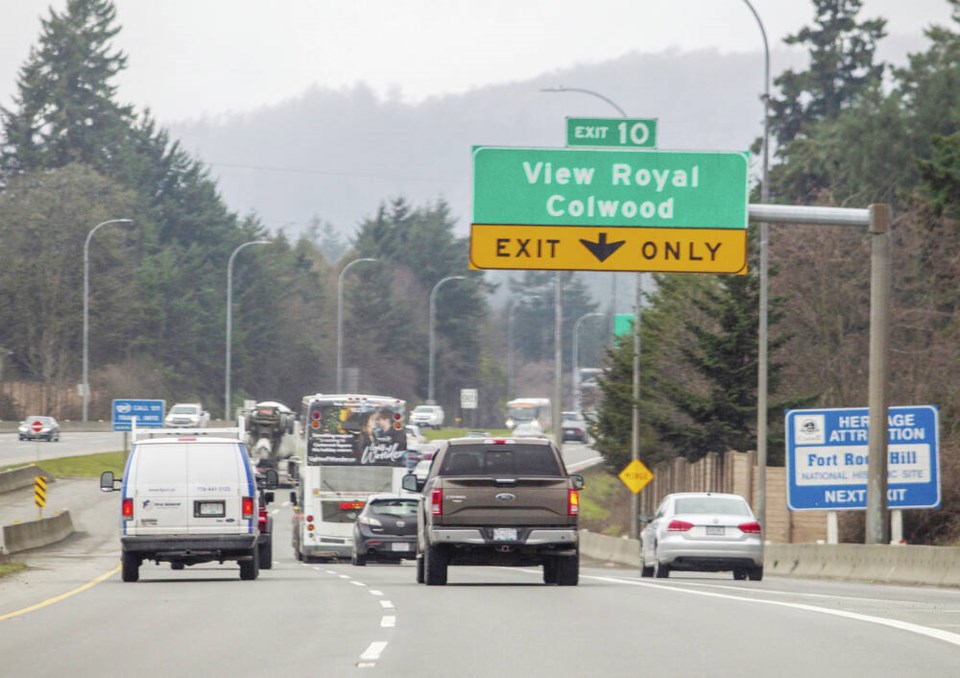Baffling occurrences on our highways are nothing new. We see them every day. But recently there seems to be a particular string of incomprehensible events happening when drivers somehow manage to enter major highways going in the wrong direction. It’s weird and the results most often are catastrophic.
Two people were killed this June in West Vancouver when a vehicle travelled eastbound in the westbound lanes on Highway 1 and struck another vehicle head on.
Back in January on the same stretch of road a disaster was narrowly avoided when a woman drove west in the eastbound lanes before she came upon a road crew doing repairs and stopped in front of a flaggers vehicle.
In April Surrey RCMP attended a crash scene on Highway 99 near Highway 91 where a Ford sedan going the wrong way smashed into a Mercedes causing life-threatening injuries to the 68-year-old Ford driver. The highway was closed for nearly 12 hours.
The major problem is that wrong-way driving pretty much involves a head-on crash, the worst type of crash a driver can face. Two cars smashing into each other at speed means their combined inertia is essentially doubled. The results are heavy crumple zone damage usually leading to severe personal injuries. There is also a danger from flying debris, such as windshield glass, propelled at incredible speed. Shards of glass hitting the human face at that speed means the cuts won’t be minor.
How does this happen? The incidents on Vancouver’s north shore have raised a flood of alarms and complaints to municipal and highway officials about what residents there see as an all too common problem.
The problem with wrong-way driving, you might guess, mostly lies with driver error. Depending on the study, it is estimated that 50-75% of wrong-way crashes involved alcohol or drug intoxication. They mostly occur on weekends between midnight and 3 a.m.
But highway design can also play a role. Exit ramps, by their very nature, parallel the major roadway and with inadequate signage or signage easily obscured by bad weather some drivers can become confused — particularly if they’ve had three or four cervezas during the evening.
This is a problem that is actually compounded by lighter traffic flow as there may be no oncoming headlights to warn a wrong-way driver right away. The result is that they are now several kilometres down the highway without any escape route.
The chances of meeting a wrong-way driver are very small but continually practising defensive driver techniques are the best way to keep those odds in your favour.
It’s important, especially when highway driving, to scan the entire road picture in front of you, not just your immediate driving zone and the cars around you. By looking way out in front you have a much better chance to see distant drivers who might be taking unexplained evasive action. That longer distance gives you more time to react - slowing down or moving off the road to avoid a head-on.
Increasing the distance between you and the cars around you also creates a better field of vision. Defensive drivers think in terms of “what if” — so pulling up tight behind someone before you pass restricts the amount of road you can see. One day when making that quick lane change from behind someone you might be pulling out directly into the path of a wrong way driver. Give yourself room.
Travelling in the right hand lane as much as possible is also a good defensive move in case of a wrong-way encounter. Remember when a wrong-way driver pulls onto a multi-lane highway - heading in the opposite and wrong way - their right-hand lane is now your left-hand lane. By travelling in the right-hand lane you have a much greater chance of escape with the roadway shoulder than you would have with a centre median on your left.
Of course the usual safe driving techniques will always help: slow down, stay off your phone and focus on the road ahead.
It’s also probably a good time for officialdom to start thinking about increased safety measures in wrong-way trouble spots with better, unmissable, signage and roadway design which limits any chance of heading the wrong way into calamity.
Glove Box: Who doesn’t love funny roadside safety messages. “Visiting in-laws? Slow down and get there late”, or “Hands on the wheel - not your meal” are a couple of recent favourites. But U.S. federal authorities are recommending an end to these shticks. Off beat pop culture slogans, while amusing, have been found to be a distraction to drivers as well. As a guy who often only gets a joke several minutes after it’s told - I get it.




